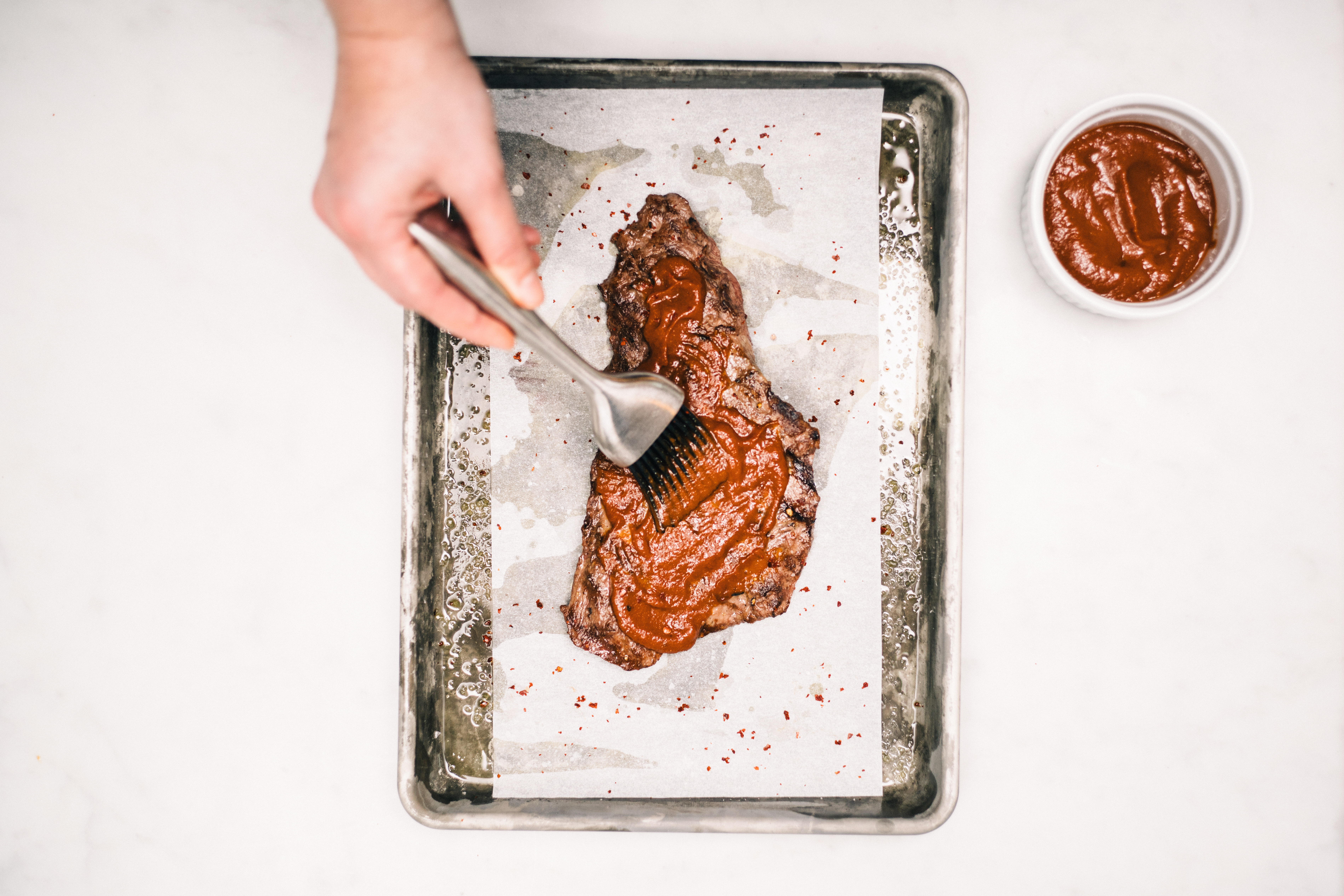A bottle of table sauce in the refrigerator is a home cook’s hero, a condiment that can perk up the simplest week-night dinner. But while table sauces have been around for decades, the past several years have seen an explosion of variety. The American consumer that once stocked ketchup, mustard, and barbecue sauce now has gochujang, hoisin, and harissa paste competing for attention.
It's a trickle-down effect from restaurants to the home kitchen. As consumers broaden their dining horizons, they want to bring that variety back home.
“People are getting more adventurous,” says Andre Poirot, executive chef for the Clinton Foundation in Little Rock, Ark. “There are restaurants opening that I wouldn’t have seen twenty years ago and it’s because people are willing to try them. Before, they would eat what they were already comfortable with.”
Home Kitchen Heros
Table sauces allow consumers to enjoy a broad range of flavors enjoyed at restaurants while staying within budget and cooking at home. According to Innova Market Research, 43% of consumers globally say they eat at home more than they eat out, most likely because of budget constraints.
At the same time, more and more consumers are scrutinizing the ingredients on a label before they make a purchase. Innova reports that 1 in 3 consumers globally say they always look at ingredients of interest on a product pack. Table sauces with easy-to-understand labels fit into the consumer goal of eating quality foods while also staying on budget.
This creates opportunities for innovation in developing products that are closer to nature, with no additives or preservatives, and only natural ingredients, such as sauces featuring real fruit ingredients.
 Photo: ©Sunsweet Growers
Photo: ©Sunsweet Growers Alternative Sweetness, Less Sodium
It’s not unusual for punchy, globally inspired sauces to incorporate fruit. In many sauces and marinades, fruit can even help draw out spices and accentuate seasonings.
“You can reduce the amount of spice and salt you put in,” says Poirot, who uses fruit ingredients such as fresh plum concentrate, prune puree, and prune bits in a range of sauces he makes in-house.
Consider pomegranate or cherry molasses, traditional fruit concentrates used throughout the Middle East that can be blended with oil and salt and turned into marinades, dressings, or glazes for meat and poultry.
In Japan, there’s tonkatsu sauce, the classic sauce for tonkatsu, a breaded and fried cutlet. Bull Dog, the most recognizable tonkatsu sauce brand in Japan, blends in prunes, apples and tomatoes to smooth out the deep savory flavors of its sauce.
Meanwhile, across the world, sauces featuring chiles, from Thai sweet chile sauce or habanero-garlic sauce blends, are among the fastest growing category launches within the sauce category, according to the Innova new products database.
 Photo: Leigh Beisch
Photo: Leigh BeischWhen crafting a sauce, it’s all about finding balance. “There is always acidity balancing out the sweetness,” says Poirot. If a fruit ingredient has acidity, like fresh plum concentrate, he can reduce or remove other forms of acidity, like vinegar or citrus. Fruit ingredients can also add sweetness to balance out the heat from chiles without adding extra sugar.
Putting Fruit to Work
For Poirot, having fruit-based ingredients, such as concentrates, on hand makes it easy to make sauce staples. For lighter sauces or anything like gastrique, a French sweet-and-sour sauce, Poirot favors fresh plum concentrate, which has a tart sweetness similar to tart cherries. He also makes his own steak sauce using prune at the base. In addition, he has found success using prune in a sauce inspired by hoisin.
For a catering event at the Clinton Library, he added prune puree and prune bits lightly marinated with rice vinegar to house-made demiglace, then served the sauce with tamari-marinated and grilled chicken, ensuring everything was gluten-free to accommodate food allergies.
“With plum sauce, they’re thinking it will be sweet,” Poirot says. But in this application, the sweetness was more subtle. “Basically, it was the sweetness of the diced plum and a bit of puree and that gives that sweetness,” he says.
Plus certain fruits, like prune and prune purees and concentrates, can provide appealing color, taking away the need to add caramel coloring. With the prune puree and the bits, “you have a nice dark brown color,” he says. “People were asking me, ‘what is this? It’s very good.’”
Sunsweet Ingredients in Sauces from CropSource International on Vimeo.





